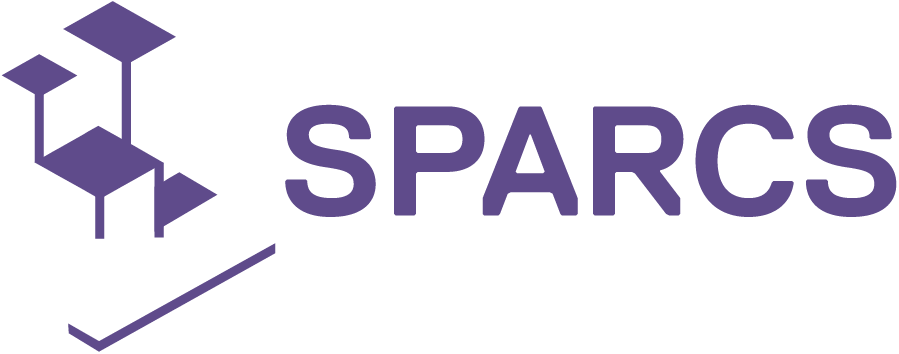From Cotton to Culture – the Leipzig Baumwollspinnerei on its way to becoming a sustainable quarter
As part of the SPARCS project, various demonstration projects are being implemented on the Baumwollspinnerei site in the west of Leipzig, representing innovative technologies from the fields of energy technology, e-mobility and smart-home. The aim is to turn the Baumwollspinnerei into an energy-positive neighbourhood. In selected areas on the site, more energy is to be generated than consumed.
The Baumwollspinnerei is an interesting demonstration site for dealing with such questions because it represents classic transitions in German real estate. Built at the end of the 19th century as a site for cotton processing, the area has meanwhile undergone a transformation exemplary for large cities: from a singular use structure with an industrial focus to a colourful community of commercial tenants, studios and cultural enterprises, among others. The individual technologies from the SPARCS project are intended to accompany and sustainably shape this change from the energy technology side. For CENERO, they can be divided into the areas of electricity, heat, e-mobility and digitalisation.
In the electricity sector, the analysis of the existing roof areas has been fully completed. For example, on the roof of one of the halls on the site, there will be a 40 kWp solar system to generate its own electricity, which, when demand is low, will feed into an electricity storage unit that will be installed in the technical rooms of the building. It was particularly challenging here to combine the maximisation of energy yield with the static conditions of the existing building fabric and the high requirements of monument protection. The simulation result of a possible system architecture is shown in Figure 1.

Figure 1: Simulation results for two exemplary roof areas on the site.
In the heating sector, a transparent, user-centred heating concept is to be created by networking intelligent thermostats with a digital energy management system and the heat supply. The innovative component of this system lies on the one hand in the software-based consumption visualisation for the tenants and on the other hand in the LoRaWAN infrastructure used to coordinate the individual system components. LoRaWAN (Low Ranged Wide Area Network) is a radio-based technology with which information can be transmitted in an energy-saving manner and over long ranges. It is increasingly being used in modern energy networks to intelligently distribute information about energy demand and energy generation. In the heating concept of Hall 14 at the Baumwollspinnerei, this means that in the heat generation system, the supply to individual heating lines switches off automatically when there is no longer a demand for heat from the rented areas. This query, in turn, works via communication with intelligent smart-home thermostats, which are installed as adaptive components in the rental spaces. The aggregated consumption values are made available to the tenants via the energy management software CENERO.one. Figure three show how the individual tenants are kept up to date on their consumption through a digital end-user solution.

Figure 2: Example mock-ups for tenant information through CENERO.one.
In the case of e-mobility, the first steps have been taken towards concrete implementation. The goal is to demonstrate bidirectional charging in a realistic environment. Here, e-cars are not only charged with electricity, but also used as a mobile battery within longer standing times and discharged accordingly when needed. A central obstacle to realisation is the novelty of this application. In Europe, for example, there has been a lack of suitable cars and general technological standards. After a long research phase, however, BMW has now been won as a cooperation partner with a suitable i3 prototype. The installation of the specially required charging station will take place in the next few weeks on the grounds of the Baumwollspinnerei. In the meantime, the location for this has been moved next to building 18 due to better structural suitability. This means that the new charging points will be a fitting addition to the renewable generation technology that is being installed there in the form of the photovoltaic system. The future e-car parking spaces are shown in Figure 4.

Figure 3: Parking spaces of the planned e-charging points and excavation work already carried out.
The last, but central component is to make the Baumwollspinnerei fit for the future in terms of energy technology via a digital infrastructure. A specially programmed software, a so-called load management system, will take over the intelligent distribution of energy on the site. Such systems are particularly necessary where different generation and storage structures meet different consumers. Because if the amount of energy in a power grid varies too much, there is a risk of grid collapse. This can happen if the photovoltaic system produces a lot of energy on a particularly sunny day or if many electric cars are refuelled at once. In these cases, load management regulates the energy distribution so that the grid remains stable. It can also, for example, prioritise the consumption of self-generated solar power before drawing it from the public grid, thereby reducing emissions. In addition, it is imperative for the intelligent control of innovative energy applications such as bidirectional charging or real-time energy trading with the public grid.
All in all, the Leipziger Baumwollspinnerei, under the supervision of CENERO Energy, is well on its way to delivering important test results on the described applications from October 2022. In this way, the individual technologies are to be made more accessible to the follower cities of the SPARCS project, but also to the community. After all, with sustainability measures in existing buildings, Germany and Europe are taking an important step towards greenhouse gas neutrality.

